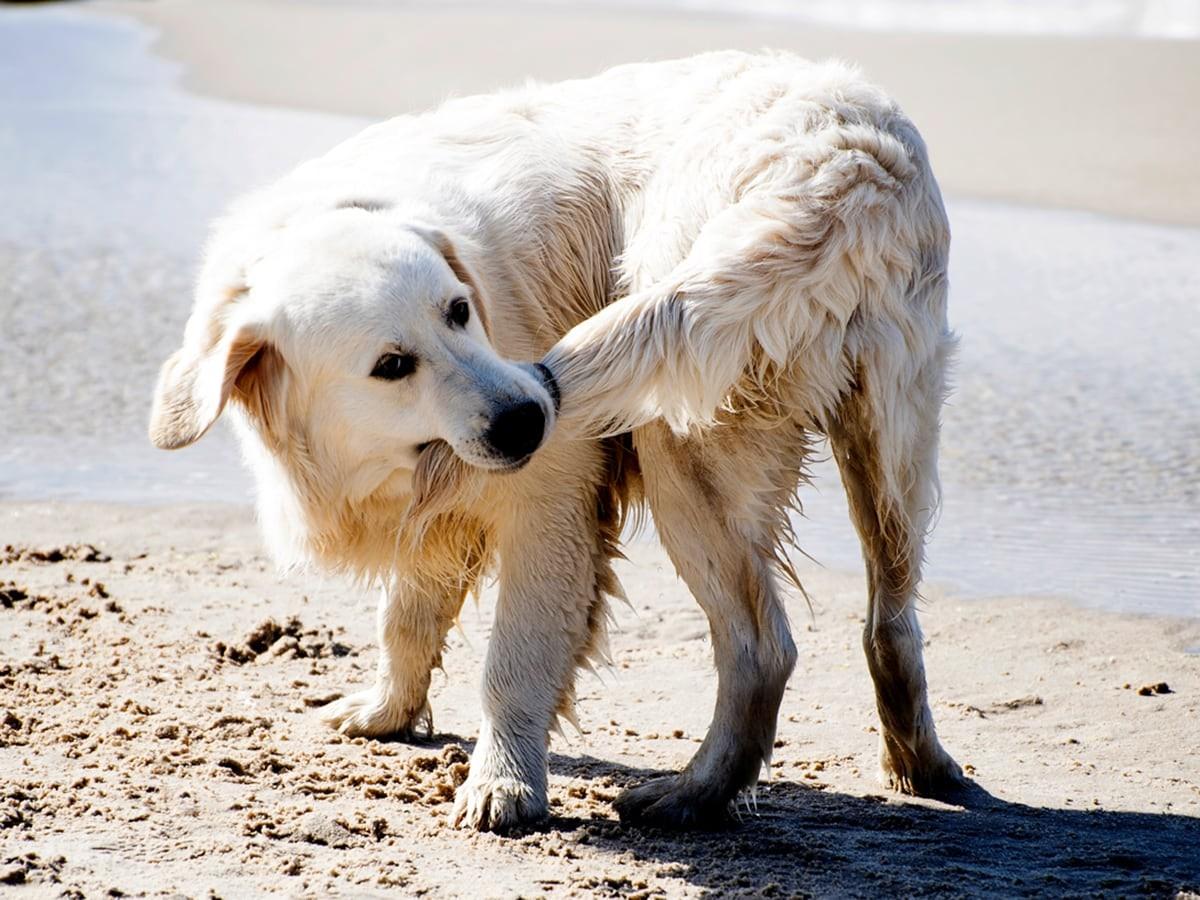Limber tail syndrome, also known as acute caudal myopathy, is a temporary condition that causes a dog's tail to become limp and unable to wag. While it primarily affects sporting and working dogs, any dog can develop it. Though not usually a serious condition, it can be quite painful. This guide will delve into the causes, symptoms, treatment, and prevention of limber tail syndrome to help you better understand and manage this condition.
What Are the Symptoms of Limber Tail Syndrome?
The most telling symptom of limber tail syndrome is a limp, drooping tail. The tail may hang down between the dog's legs, be held horizontally for a short distance before drooping, or be entirely limp. Other signs include:
Pain or discomfort when the tail is touched or moved
Whining or whimpering
Reluctance to move or wag the tail
Difficulty sitting or defecating
What Causes Limber Tail Syndrome?
Overexertion and Strenuous Activity
Limber tail syndrome often results from overexertion of the tail muscles. Activities that can trigger this condition include:
Swimming, especially in cold water: The cold water can cause muscle spasms and inflammation.
Intense exercise: Overexertion during running, fetching, or agility training can strain the tail muscles.
Excessive wagging: Even enthusiastic tail wagging can sometimes lead to muscle strain.
Prolonged Confinement
Keeping a dog in a cramped crate for extended periods can also contribute to limber tail syndrome. The tail may be unable to rest comfortably, leading to muscle fatigue and stiffness.
When to See a Vet
Although limber tail syndrome is usually self-limiting and resolves on its own within a few days to a week, it's crucial to consult your veterinarian if you notice any of the following:
Severe pain or discomfort in your dog
Symptoms that don't improve within a few days
Any other concerning signs, such as weakness or lethargy
Your veterinarian can rule out other potential causes of a limp tail, such as spinal injuries or neurological problems, and recommend appropriate treatment.
How is Limber Tail Syndrome Treated?
Pain Relief for Limber Tail Syndrome
Limber tail syndrome typically resolves on its own with rest and time. However, pain management is essential to ensure your dog's comfort during recovery. Your veterinarian may recommend:
Anti-inflammatory pain medication: Nonsteroidal anti-inflammatory drugs (NSAIDs) can help reduce pain and inflammation.
Warm compresses: Applying warm compresses to the base of the tail can also help soothe sore muscles.
How Do You Fix Limber Tail Syndrome?
Limber tail usually goes away with rest and anti-inflammatory medication in a few days to a week. However, if symptoms persist or worsen, consult your veterinarian for further evaluation and treatment.
Is Limber Tail an Emergency?
Although it is painful, limber tail syndrome is relatively benign and usually heals itself within a week with a little R&R.
Should You Walk a Dog With a Limber Tail?
Your dog still needs enough exercise to stay healthy and stimulated – be sure to get your dog warm and dry as soon after the walk, and avoid strenuous walks if your dog isn't accustomed to them, why not build up slowly?
Recovery and Prevention
Rest: Restrict your dog's activity for a few days to allow the tail muscles to heal.
Gradual return to activity: As your dog recovers, gradually reintroduce exercise, starting with short walks and gradually increasing the duration and intensity.
Warm-up and cool-down: Always warm up your dog before exercise and cool them down afterward to prevent muscle strain.
Avoid cold water: Limit or avoid swimming in cold water, especially during the colder months.
Expert Insights From Spot
Generally, tail injuries are not considered as serious as other conditions but can still be expensive to treat. Spot's internal data shows that tail injuries, including Limber Tail Syndrome, cost an average of $650 to treat, 68% more expensive than the average claim submitted at Spot. So while Limber Tail Syndrome is not necessarily dangerous to the long-term health of your pet, taking just a few precautions can help you avoid an unnecessary vet bill.
Key Takeaways
Limber tail syndrome is a painful but temporary condition that usually resolves with rest and pain management. By understanding its causes and taking preventive measures, you can help your dog avoid this uncomfortable ailment. If you suspect your dog has limber tail syndrome, consult your veterinarian for diagnosis and treatment recommendations.

As Spot’s resident cat enthusiast, I am dedicated to researching and sharing information that helps pet owners take the best care of their pets. Pet ownership comes with it’s share of challenges, but my goal is to help make this journey easier.












